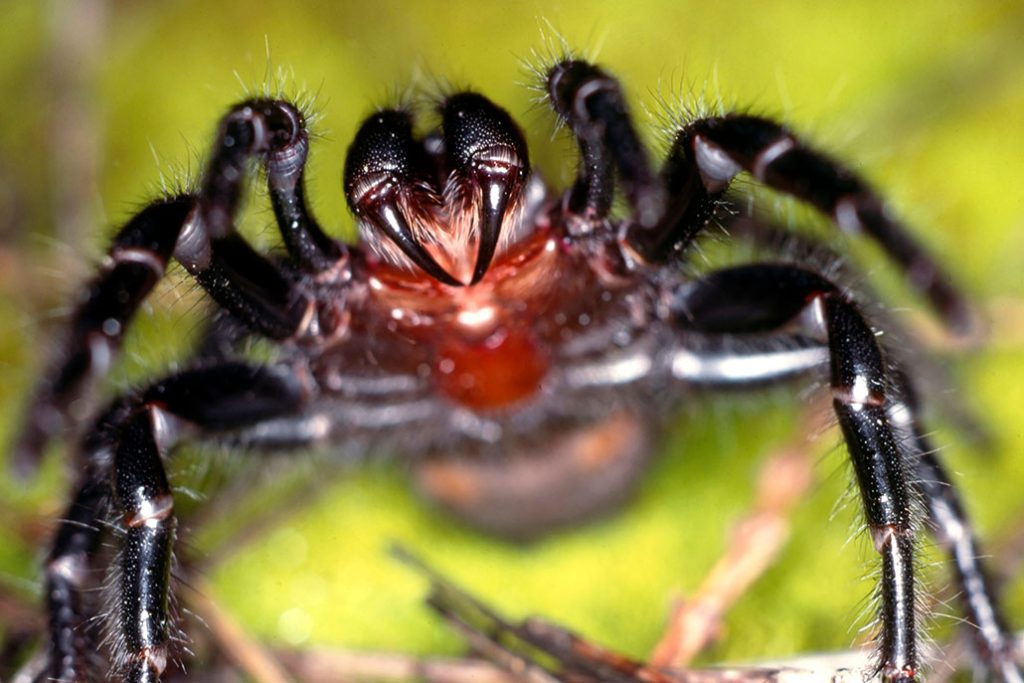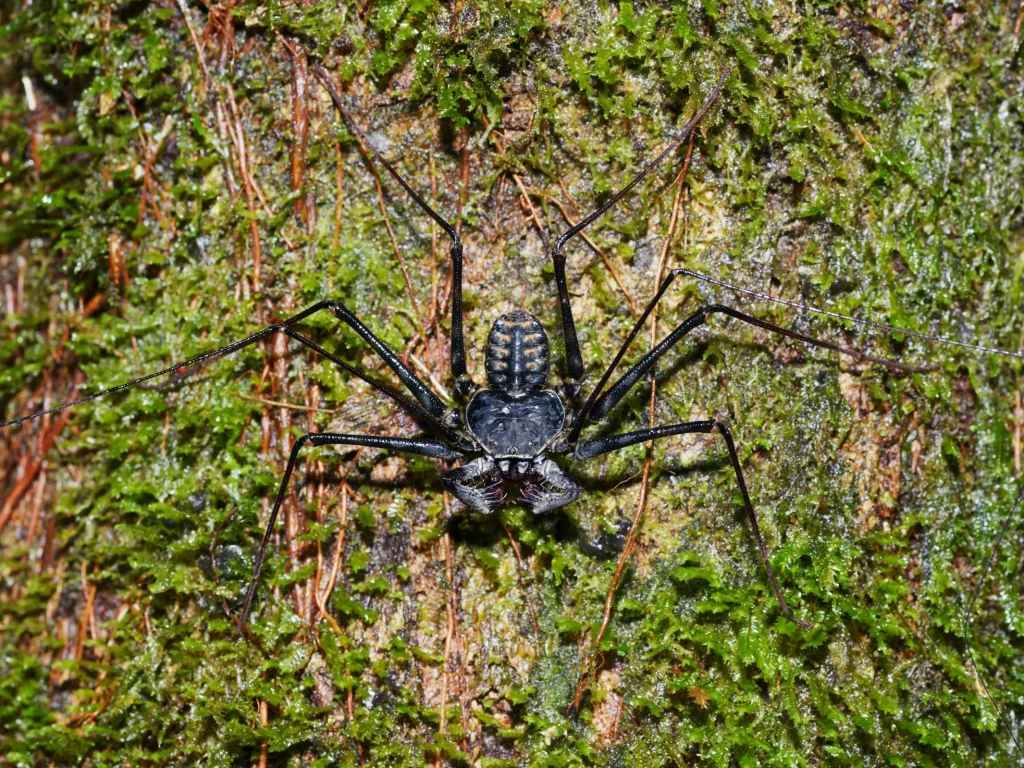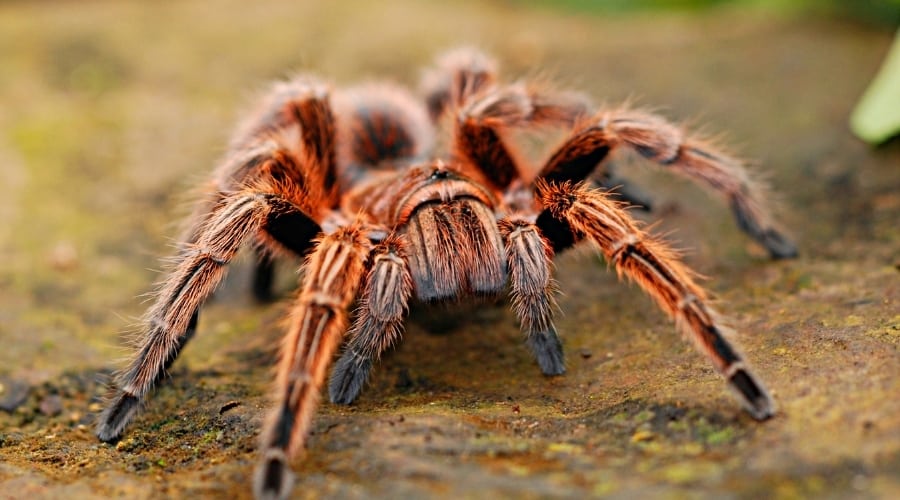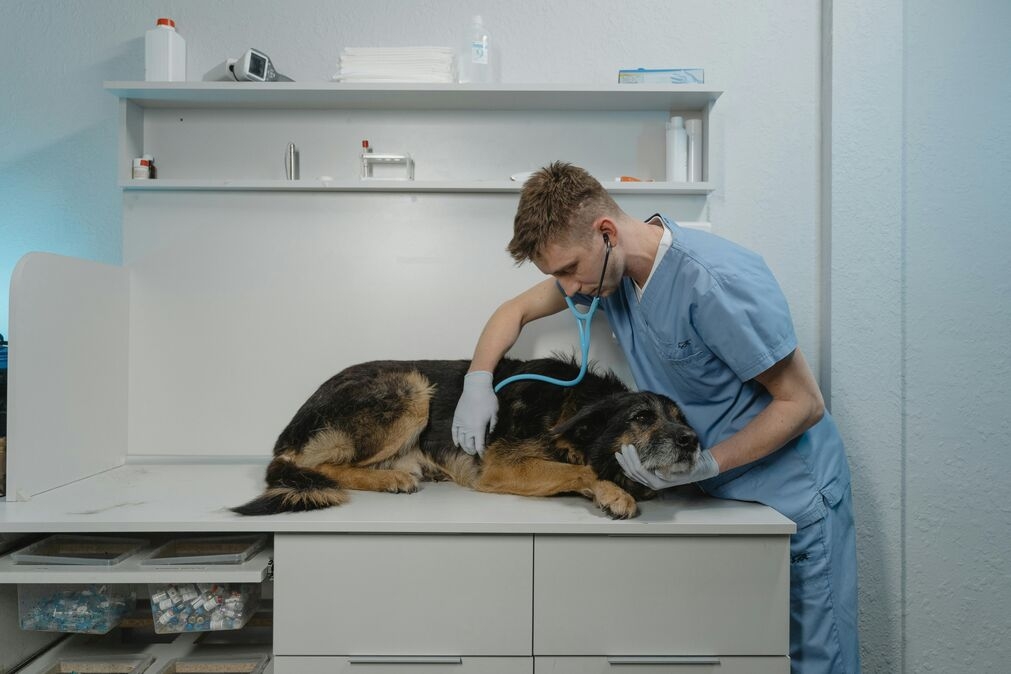No, spiders don’t have bones. They’re called invertebrates because they lack a spine. Instead of bones, they have an external skeleton, called an exoskeleton, which supports their bodies and protects their insides.
Further, Spiders are part of a big group of invertebrates, which includes insects, crustaceans (like crabs), mollusks, and worms. Not all invertebrates have an exoskeleton, but spiders do, and it helps them survive in the wild.
Here, you will learn about the special features of spiders.
Characteristics of a Backbone

Here are some general characteristics:
- Centralized Structure:
- A backbone is often a centralized or main structure that forms the core of a system. It serves as a primary support or framework upon which other elements rely.
- High Capacity and Bandwidth:
- In networking, typically it has high capacity and bandwidth to efficiently handle the transmission of data between various subnetworks or devices. This ensures smooth and fast communication.
- Reliability and Redundancy:
- They are designed to be reliable, often incorporating redundancy measures to ensure continued operation in case of failures. This is crucial for maintaining system integrity and minimizing downtime.
- Scalability:
- Moreover, it should be scalable, and capable of accommodating the growth of the system it supports. This scalability ensures that the backbone can handle increasing demands and expanded functionalities.
- Efficient Routing:
- In networking, a backbone is responsible for efficient data routing. It determines the best paths for data to travel between different parts of the network, optimizing communication and minimizing latency.
- Interoperability:
- Furthermore, it often supports interoperability, enabling different components or subsystems to work together seamlessly. This is particularly important in complex systems where various elements need to interact cohesively.
- Security Measures:
- Security is a critical aspect of a backbone, especially in networks. It should incorporate measures such as encryption, access controls, and monitoring to protect against unauthorized access and data breaches.
- Flexibility:
- It should exhibit flexibility to adapt to changing requirements and technological advancements. This adaptability ensures that the system remains relevant and functional over time.
- Management and Monitoring:
- Effective management and monitoring tools are essential for overseeing the health and performance of it. This includes capabilities for diagnostics, troubleshooting, and performance optimization.
- Standards Compliance:
- Backbones often adhere to industry standards, ensuring compatibility with various components and systems. This adherence facilitates integration and enhances the overall interoperability of the system.
Spider Strength and Adaptations: The Marvel of the Chitinous Exoskeleton
Spiders devoid of a skeletal framework akin to humans, rely on a unique adaptation for survival: an exoskeleton crafted from chitin. This external casing assumes a pivotal role in safeguarding the arachnid, fending off assaults from other creatures, and fortifying their internal anatomy. Unlike vertebrates with an internal bony infrastructure, spiders, as invertebrates, lack a spine or bones.
Additionally, examining the internal intricacies of a spider reveals a notable absence of bone connections, with soft structures comprising the majority of internal organs and tissues. Consequently, the onus falls upon the exoskeleton to serve as the primary shield against external threats and provide structural integrity to the creature.
Foremost among the multifaceted roles played by the exoskeleton is its function as a formidable protective barrier. Its composition of chitin renders it resistant to degradation, dissuading potential assailants from engaging spiders in direct confrontation. The strategic advantage lies in the robust nature of the exoskeleton, discouraging attacks from adversaries.
Furthermore, it assumes the responsibility of shielding the spider’s internal organs. Given the vulnerability of the arachnid’s soft internal structure when exposed, the external chitinous armor becomes paramount in preserving the integrity of vital organs.
A noteworthy attribute of the exoskeleton is its contribution to enhanced strength. In comparison to endoskeletons comprising bones and spines, the exoskeleton imparts superior strength to the overall body structure. This augmentation allows the spider’s muscles to exert more force, surpassing the limitations imposed by an endoskeleton’s bone structure and size.
However, a distinctive characteristic of the exoskeleton is its inability to grow concurrently with the spider. To counter this limitation, spiders undergo molting, and shedding their exoskeletal shell as they progress in size. This molting process affords them the necessary space for growth, necessitating multiple molting episodes until they reach full maturity.
Spider Anatomy
| Body Parts | Description |
| Cephalothorax | The front part of the spider’s body, encompassing the head and thorax. |
| Abdomen | The back part housing vital organs. |
| Legs | Eight specialized appendages for walking, sensing vibrations, and capturing prey. |
| Eyes | Multiple eyes arranged uniquely for species, crucial for detecting movement and light. |
| Fangs and Chelicerae | Fangs near the cephalothorax inject venom; chelicerae support fangs and manipulate prey. |
| Spinnerets | Located at the rear of the abdomen, these organs produce silk for web-building and other purposes. |
| Pedipalps | Small, leg-like appendages near the mouth, serving sensory and reproductive functions. |
| Book Lungs (Some Species) | Respiratory organs allowing gas exchange for breathing. Some species may have tracheae as well. |
| Mouthparts | Specialized chelicerae and fangs for biting and injecting venom into prey. |
Surviving Without Bones: The Amazing Adaptations of Spiders
Spiders are different from us because they don’t have bones. But don’t worry, they have cool adaptations that help them live without bones!
Instead of bones, they have a tough outer shell made of something called chitin. This shell protects them and keeps everything in place. Also have strong legs that help them move around easily.
Moreover, they are clever. Because they have eight legs instead of standing up straight like us. These legs are super strong and help them zip around quickly. Plus, spiders are amazing at sensing things around them, like vibrations in the air.
Their webs are among their coolest features. They are like tiny architects, capable of creating complex webs. They can outsmart other insects and capture prey due to these webs.
And guess what? Some spiders are a bit like superheroes – they’re toxic! If something tries to attack them, they can give a little bite and stun or disable the attacker.
So, even though spiders don’t have bones like us, they have these awesome features that make them masters of survival in their own way.
Animals with Exoskeletons: Beyond Spiders in the Invertebrate World

Lots of animals, not just spiders have something called an exoskeleton instead of bones. These animals are part of a big group called invertebrates, which means they don’t have a backbone. Insects, like ants and butterflies, are one of the largest groups of these animals with exoskeletons. Other examples include crabs, lobsters, shrimp, ticks, mites, and scorpions.
Now, even though their exoskeletons are hard, these animals can still move because they have bendable parts in their exoskeletons. Some even have tiny holes called spiracles in their exoskeletons to help them breathe on land.
Most of these animals, just like spiders, go through a process called molting. This is like getting rid of their old exoskeleton and growing a new, bigger one. During this time, they don’t have the protection of their hard shell, so they need to be careful.
But there are some animals, like clams, oysters, mussels, and snails, that have a bit different kind of exoskeleton called a shell. Shells are made of a material called calcium carbonate and don’t go through molting. Instead it grows along with the animal.
FAQ’s
Is A Spider A Vertebrate or an Invertebrate?
Spiders are invertebrates, lacking a backbone. They have an exoskeleton made of chitin and are classified among arachnids.
Does a Spider Have Bones?
No, spiders don’t have bones. They rely on an exoskeleton made of chitin, which they molt to grow, often mistaken for dead spiders.
Does a Cockroach Have a Backbone?
No, cockroaches are invertebrates and do not have a backbone. They have an exoskeleton for support.
Does a Snake Have a Backbone?
Yes, all snakes have a vertebral column, commonly known as a backbone. Their vertebrae provide flexibility for crawling.
Is A Spider An Invertebrate?
Yes, spiders are invertebrates. Invertebrates include spiders, worms, snails, lobsters, crabs, and insects, whereas animals with backbones are vertebrates.
Does an Ant Have a Backbone?
No, ants are invertebrates and do not have a backbone. They, like other insects, have exoskeletons.
Do Spiders Have 48 Knees?
Yes, spiders have 48 knees, with 6 knees on each leg. They are not insects but belong to the arachnid family along with scorpions, mites, ticks, and harvestmen.
Final Words
To sum up, spiders do not have a traditional backbone like humans do. Instead, they possess a remarkable adaptation in the form of an exoskeleton made of chitin. This external shell serves a crucial role in providing structural support, protecting internal organs, and aiding spiders in navigating their environments.
Moreover, while lacking a backbone, they exhibit incredible strength, agility, and survival strategies through their unique anatomical features. The absence of a traditional vertebral column is compensated by the evolutionary advantages conferred by the chitinous exoskeleton, allowing spiders to thrive in diverse ecosystems and exemplifying the fascinating diversity of life on Earth.











